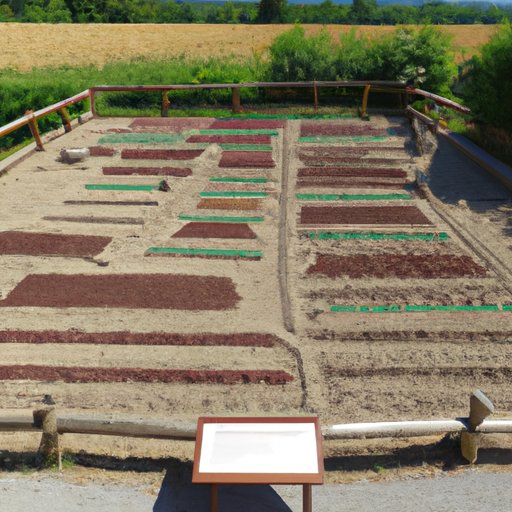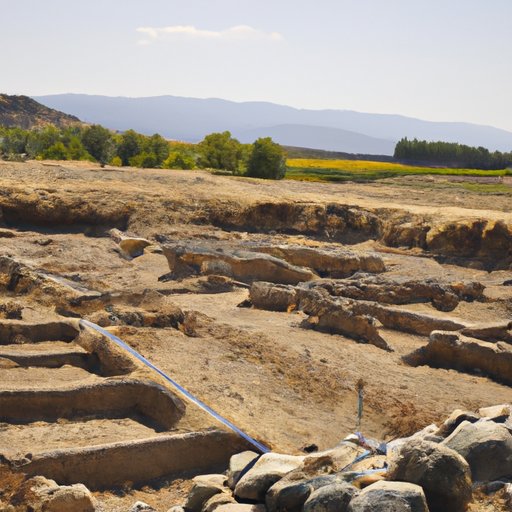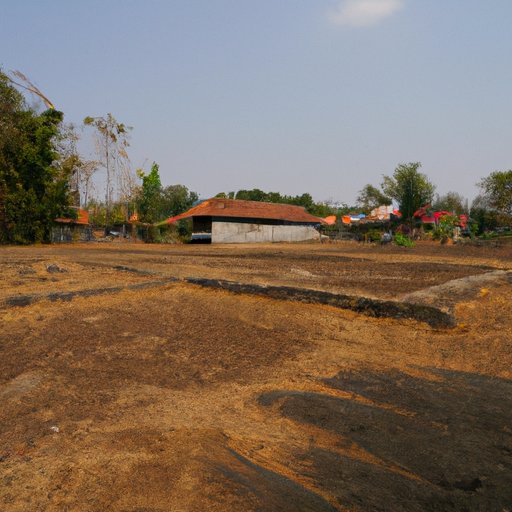Introduction
Farming is an integral part of human civilization, providing us with food and other resources. But just how far back does this practice go? When was farming invented? This article will explore the origins of farming by looking at evidence from archaeological and anthropological research.
Definition of Farming
Farming is the practice of cultivating land for the purpose of producing food and other resources, such as timber and fuel. It is a form of subsistence agriculture, meaning that the people who engage in it rely on the crops they produce for their livelihoods. Farming can involve growing crops, raising animals, or both.
Overview of the Problem
The invention of farming is one of the most important developments in human history, as it allowed humans to settle down in one place and create stable societies. But how and when did this crucial development occur? While there is still much debate among scholars, many believe that farming first emerged around 10,000 years ago in the Fertile Crescent region of the Near East.

Historical Overview of the Origins of Farming
To better understand the origins of farming, it is important to look at the history of human societies. Agriculture has been practiced since ancient times, but it was not until the Neolithic period (c. 8000–4000 BCE) that it began to take shape as a distinct activity.

Ancient Societies and the Emergence of Agriculture
In the Paleolithic era (c. 2.5 million – 10,000 BCE), humans were nomadic hunter-gatherers, relying on wild plants and animals for sustenance. During this time, some groups began to develop rudimentary forms of agriculture, such as planting and harvesting wild grains. However, this activity was still limited and did not lead to any major changes in society.
The Neolithic Revolution and the Invention of Farming
It wasn’t until the Neolithic period that farming truly began to emerge. According to archaeologist Graeme Barker, “The Neolithic Revolution marks the transition from hunting and gathering to the beginnings of agricultural production and settlement.” This revolution led to the domestication of plants and animals, the development of new tools and technologies, and the emergence of permanent settlements.
Examining the Evidence: How and When Was Farming Invented?
While the exact date of the invention of farming is still a matter of debate, archaeological and anthropological evidence suggests that it occurred sometime between 10,000 and 8,000 BCE in the Fertile Crescent region of the Near East. This region was home to a number of ancient cultures, including the Sumerians, Babylonians, and Assyrians.
Archaeological Evidence
Archaeological evidence suggests that farming was invented in the Fertile Crescent around 10,000 BCE. Archaeologists have uncovered numerous sites in the region dating to this period, including stone tools, pottery, and other artifacts associated with the early practice of agriculture. For example, in 2018, archaeologists discovered a 9,000-year-old site in Turkey that contained evidence of early farming, including grinding stones and sickles used for harvesting grain.
Anthropological Evidence
Anthropological evidence also supports the idea that farming was invented in the Fertile Crescent around 10,000 BCE. Anthropologists have studied the lifestyles of modern hunter-gatherer societies and compared them to those of ancient farming societies. They have found that these societies developed different technologies and social structures in response to the challenges posed by the invention of agriculture.
The Impact of Farming on Human History
The invention of farming had a profound impact on human history. It allowed humans to settle down in one place and create larger, more complex societies. It also led to increased food security, allowing populations to grow and leading to the development of cities and civilizations.
According to Professor Robert Foley of Cambridge University, “The development of agriculture was one of the most important developments in human history. It allowed humans to move away from a nomadic lifestyle and settle down in one place, creating larger and more complex societies.”

Exploring the Ancient Tools and Techniques Used in Early Farming
The invention of farming required the development of new tools and techniques. These included basic tools and technologies, such as hoes and plows, as well as more sophisticated methods, such as crop rotation and irrigation. The use of these tools and techniques allowed farmers to increase yields and improve the productivity of their lands.
Basic Tools and Technologies
The invention of farming required the development of new tools and technologies. These included basic tools, such as hoes and plows, which were used to till the soil and prepare it for planting. Other tools, such as scythes and sickles, were used to harvest the crops.
Crop Rotation and Irrigation
More advanced techniques, such as crop rotation and irrigation, were also developed in order to maximize yields. Crop rotation involves planting different crops in succession in the same field in order to improve soil fertility. Irrigation involves using water from rivers or wells to water the fields.
Archaeological Discoveries Shedding Light on the Invention of Farming
Recent archaeological discoveries are shedding light on the invention of farming. Archaeologists have uncovered numerous sites in the Fertile Crescent region that provide evidence of early agricultural activity. These sites include evidence of early tools and technologies, as well as the remains of ancient settlements.

Sites of Early Agricultural Activity
Archaeological sites in the Fertile Crescent region provide evidence of early agricultural activity. These include sites in Israel, Jordan, Syria, and Turkey, which date back to the Neolithic period. These sites contain evidence of the domestication of plants and animals, as well as the use of tools and techniques for increasing yields.
Uncovering Ancient Cultures
Archaeological sites in the Fertile Crescent region have also provided evidence of ancient cultures. These sites have revealed evidence of the art and architecture of ancient societies, as well as their religious beliefs and spiritual practices.
Conclusion
The invention of farming was one of the most important developments in human history. It allowed humans to settle down in one place and create larger, more complex societies. While the exact date of the invention of farming is still a matter of debate, archaeological and anthropological evidence suggests that it occurred sometime between 10,000 and 8,000 BCE in the Fertile Crescent region of the Near East. Recent archaeological discoveries are shedding light on the invention of farming, providing evidence of the tools and techniques used in early farming and the ancient cultures that developed around it.
(Note: Is this article not meeting your expectations? Do you have knowledge or insights to share? Unlock new opportunities and expand your reach by joining our authors team. Click Registration to join us and share your expertise with our readers.)
